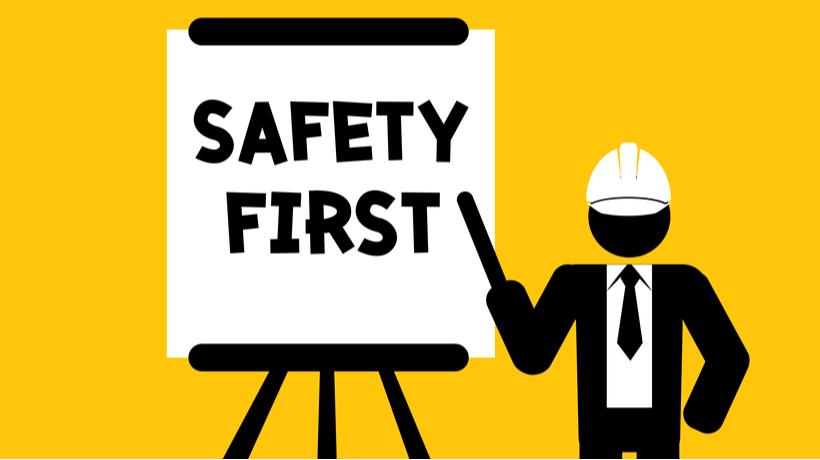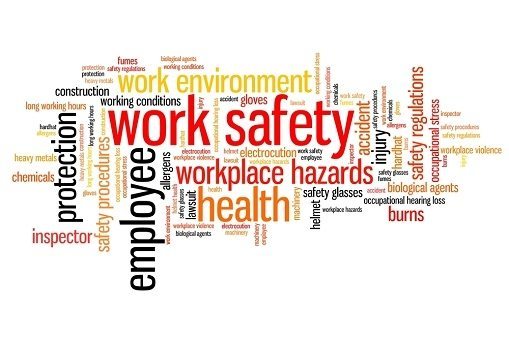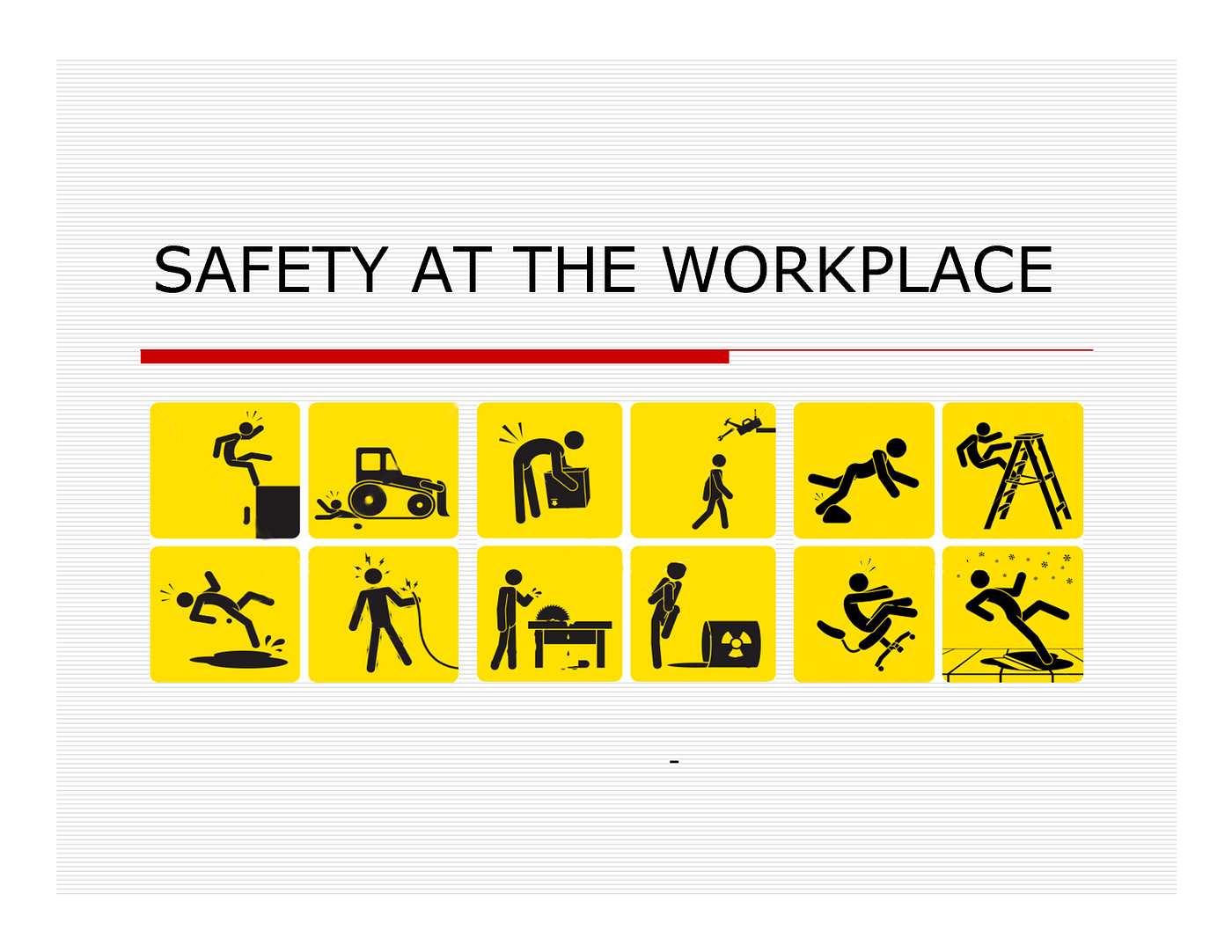Workplace Safety
Workplace safety is essential for the well-being of employees and the overall success of a company. By implementing proper safety measures and protocols, businesses can prevent accidents, injuries, and potential legal issues.
Providing a safe work environment promotes employee satisfaction, productivity, and reduces absenteeism and turnover rates. Additionally, it enhances a company’s reputation and fosters a positive work culture. Whether it’s using protective equipment, conducting regular safety training, or enforcing safety policies, organizations must prioritize the safety and security of their workforce.
Employers should constantly evaluate and improve safety measures to meet industry standards, comply with regulations, and protect the health and welfare of their employees.
Workplace Safety: An Essential Responsibility
In today’s fast-paced work environments, ensuring workplace safety is an essential responsibility for employers and employees alike. From preventing accidents and injuries to promoting overall well-being, workplace safety plays a crucial role in creating a productive and positive work environment.
Creating A Safe Work Environment
Maintaining a safe work environment is the foundation of workplace safety. Employers must take proactive measures to identify and eliminate potential hazards that could compromise the well-being of their employees. This includes regular inspections of the workplace, identifying safety risks, and promptly addressing any issues that may arise.
Creating a safe work environment involves not only the physical aspects but also the psychological well-being of employees. Employers should foster a culture of respect and inclusivity, promoting mental health awareness and providing resources for support. When employees feel safe and valued, their productivity and job satisfaction increase significantly.
Implementing Safety Policies And Procedures
A robust system of safety policies and procedures is vital for every workplace. Employers must develop and clearly communicate these policies to ensure everyone understands their roles and responsibilities in maintaining a safe environment. This includes guidelines for emergency procedures, handling hazardous materials, safe operation of machinery, and the use of personal protective equipment.
| Benefits of Implementing Safety Policies and Procedures |
|---|
|
Regular training sessions should be conducted to ensure employees are aware of safety protocols and understand how to apply them in their daily tasks. By providing ongoing education and reinforcement, employers can empower their workforce to actively participate in maintaining a safe working environment.
In conclusion, workplace safety is not just a legal obligation, but a moral responsibility. Prioritizing safety not only protects employees from harm but also enhances their well-being and overall job satisfaction. By creating a safe work environment and implementing safety policies and procedures, employers demonstrate their commitment towards the safety and success of their workforce.

Credit: elearningindustry.com
Identifying And Assessing Hazards
This short description focuses on workplace safety. Learn how to meticulously identify and assess hazards to ensure a secure work environment.
Conducting Regular Safety Inspections
Ensuring workplace safety is a critical responsibility for any organization. Conducting regular safety inspections is an essential part of this process, as it allows businesses to identify potential hazards and implement appropriate measures to mitigate them. Scheduling routine inspections helps create a proactive approach to workplace safety and ensures that any potential risks are promptly addressed.
During safety inspections, trained professionals or designated employees carefully examine the workplace environment, machinery, equipment, and work processes to identify any hazards that may pose a threat to the well-being of employees. These inspections not only help in identifying potential risks but also provide an opportunity to ensure compliance with safety regulations and standards.
Regular safety inspections serve several purposes. Firstly, they enable companies to stay updated on the overall safety performance of the workplace and track progress in implementing safety measures. By regularly assessing the workplace environment, companies can identify areas that require improvement and take timely action to rectify any shortcomings.
Analyzing Potential Risks
Once hazards are identified during safety inspections, the next step is to analyze and assess the potential risks associated with those hazards. Analyzing risks is crucial as it helps prioritize resources and determine the most effective control measures to minimize or eliminate the risks.
There are several factors that need to be considered while analyzing potential risks. These include the likelihood of the hazard occurring and the severity of the consequences if it does. A thorough risk analysis process involves evaluating the probability of exposure to the hazard, evaluating the potential consequences, and determining the level of risk associated with each hazard.
A widely used approach for risk analysis is the risk matrix. This matrix uses a combination of severity and likelihood ratings to determine risk levels and assign priority to the identified hazards. By categorizing risks based on their level of severity, businesses can prioritize their efforts and allocate resources appropriately to address the most significant risks first.
Regular risk analysis is crucial because workplace hazards are not static – they can evolve over time due to changes in work processes, equipment, or even external factors. By continuously analyzing and reassessing potential risks, companies can ensure that their safety measures remain effective and up-to-date.
Training And Education For Employees
In order to maintain a safe and secure working environment, providing comprehensive safety training and education for employees is crucial. By equipping employees with the necessary knowledge and skills to recognize potential hazards and respond appropriately, employers can proactively prevent accidents and minimize risks. This blog post will discuss the importance of training and education programs for employees, focusing on three key aspects: providing comprehensive safety training, ensuring employee awareness, and promoting ongoing learning.
Providing Comprehensive Safety Training
One of the first steps towards ensuring workplace safety is to provide employees with comprehensive safety training that covers all relevant aspects of their jobs. This training should include information about potential hazards, safety protocols, emergency procedures, and the proper use of safety equipment. By thoroughly familiarizing employees with safety practices, employers can empower them to make informed decisions and take appropriate actions.
A comprehensive safety training program should be tailored to the specific needs of the workplace. It should be designed to address the unique risks and challenges that employees may encounter in their daily tasks. By conducting regular assessments of the work environment, employers can identify areas that require special attention and incorporate them into the training curriculum.
Ensuring Employee Awareness
While providing training is essential, it is equally important to ensure that employees remain aware of safety practices on an ongoing basis. This can be achieved through regular reminders and reinforcement of safety protocols. Employers can use various communication channels, such as visual reminders, safety posters, and regular safety meetings, to keep safety at the forefront of employees’ minds.
Additionally, employers should encourage open communication and feedback from employees regarding any safety concerns or suggestions. By creating a culture of safety awareness, employees feel empowered to actively participate in maintaining a safe work environment and contribute to the improvement of safety practices.
Promoting Ongoing Learning
Workplace safety is not a one-time effort; it requires continuous learning and improvement. To promote ongoing learning, employers should provide additional education and training opportunities for employees. This can include workshops, seminars, and online courses that cover advanced safety topics or address emerging risks.
By investing in ongoing learning, employers not only enhance their employees’ safety knowledge but also demonstrate their commitment to maintaining a safe workplace. Employees who feel supported in their professional development are more likely to actively engage in safety practices and contribute to a culture of continuous improvement.
Ultimately, by providing comprehensive safety training, ensuring employee awareness, and promoting ongoing learning, employers can create a workplace where safety is prioritized and embedded into daily routines. Investing in the education and training of employees not only protects their well-being but also safeguards the overall productivity and success of the organization.

Credit: www.terrastaffinggroup.com
Emergency Preparedness And Response
Prepare your workplace for any emergency with effective emergency preparedness and response measures. Ensure workplace safety by implementing proactive strategies to protect your employees and minimize potential risks.
Emergency Preparedness and Response Emergency preparedness and response is a crucial aspect of workplace safety. Being prepared for unexpected situations can save lives and minimize damage. In this section, we will discuss three key components of emergency preparedness and response: developing emergency plans, training employees on emergency procedures, and maintaining safety equipment. Developing Emergency Plans Developing comprehensive emergency plans is the foundation of effective emergency preparedness. These plans outline the necessary steps to be taken during various types of emergencies, such as fires, natural disasters, or medical emergencies. By having a well-defined plan in place, you can ensure a quick and organized response, minimizing confusion and panic. When developing emergency plans, consider the layout and specific needs of your workplace. Identify escape routes, assembly points, and locations of emergency equipment. Assign responsibilities to designated individuals in case of an emergency. Keep in mind that emergency plans should be regularly reviewed and updated in order to adapt to changing conditions. Training Employees on Emergency Procedures Training employees on emergency procedures is paramount to their safety and the success of emergency response efforts. Employees should be educated on how to recognize emergencies and the immediate actions they should take. This includes knowing how to evacuate the building, operate safety equipment, and provide basic first aid if necessary. Organize regular training sessions to ensure that employees are well-prepared and know what to do in different emergency scenarios. These sessions should cover topics such as fire safety, evacuation procedures, and the proper use of safety equipment. Encourage employees to ask questions and provide feedback to enhance their understanding and confidence in handling emergencies. Maintaining Safety Equipment Safety equipment plays a vital role in emergency preparedness and response. Adequate and well-maintained safety equipment can prevent accidents from escalating and protect employees from harm. Regular inspections and maintenance of safety equipment are essential to ensure their functionality when needed. Create a schedule for inspecting and testing safety equipment, such as fire extinguishers, smoke detectors, and emergency exit signs. Make sure that all equipment is accessible and clearly labeled. Train employees on how to use safety equipment correctly, and encourage reporting of any malfunctions or damages for immediate repair or replacement. Conclusion Emergency preparedness and response are critical aspects of maintaining workplace safety. By developing emergency plans, training employees on emergency procedures, and maintaining safety equipment, you can create a safer work environment for everyone. Regularly reviewing and updating these measures will help ensure that your workplace remains prepared for any unexpected situation that may arise.Continuous Improvement And Reporting
Continuous improvement and reporting play a crucial role in maintaining workplace safety. By thoroughly investigating incidents and near-misses, implementing corrective and preventive measures, monitoring safety performance, and reporting and communicating safety issues, organizations can create a safer working environment for employees. Let’s explore each of these aspects in more detail:
Investigating Incidents And Near-misses
Incidents and near-misses provide valuable insights into potential hazards that need to be addressed. By promptly investigating these occurrences, companies can identify the root causes and take appropriate actions to prevent similar incidents in the future. Conducting thorough investigations allows organizations to understand the underlying issues and make informed decisions regarding safety improvements.
Implementing Corrective And Preventive Measures
Once the root causes have been determined, it is crucial to implement corrective and preventive measures to address them effectively. This may involve modifying work processes, providing additional training, enhancing safety equipment, or reevaluating existing protocols. By taking proactive steps to eliminate or minimize risks, organizations can continuously improve their safety practices and create a safer work environment for everyone.
Monitoring Safety Performance
Regularly monitoring safety performance allows organizations to track the effectiveness of their safety measures and identify areas for improvement. This may involve analyzing incident reports, conducting safety audits, and utilizing key performance indicators (KPIs) to measure safety performance against established targets. By closely monitoring safety performance, organizations can identify trends, assess the efficacy of their safety programs, and make data-driven decisions to enhance workplace safety.
Reporting And Communicating Safety Issues
Reporting and communicating safety issues is essential for fostering a culture of transparency and accountability within an organization. Employees should be encouraged to report any safety concerns promptly, ensuring that potential risks are identified and addressed in a timely manner. By collecting and analyzing this information, organizations can gain insights into common safety issues, identify emerging trends, and implement proactive measures to prevent accidents before they occur.
Moreover, effective communication of safety issues throughout the organization ensures that employees are aware of potential hazards and understand the importance of adhering to safety protocols. Companies should establish clear channels of communication to disseminate safety-related information and provide updates on the progress of safety initiatives. This two-way communication not only empowers employees to actively participate in maintaining workplace safety but also promotes a collaborative approach in continuously improving safety standards.

Credit: www.appspace.com
Frequently Asked Questions Of Workplace Safety
Is Workplace Safety Important For All Industries?
Yes, workplace safety is crucial for all industries as it ensures the well-being of employees, reduces accidents, and enhances productivity.
What Are The Benefits Of Prioritizing Workplace Safety?
Prioritizing workplace safety not only reduces accidents and injuries but also boosts employee morale, decreases absenteeism, and improves overall productivity.
How Can Employers Ensure Workplace Safety?
Employers can ensure workplace safety by conducting regular safety inspections, providing proper training and protective equipment, promoting open communication, and enforcing safety policies strictly.
Conclusion
Prioritizing workplace safety is crucial for both the well-being of employees and the overall success of any organization. By implementing proper safety measures and fostering a safety-conscious culture, employers can prevent accidents and injuries, boost employee morale, and increase productivity.
Regular training, thorough risk assessments, and open communication channels contribute to creating a safe and secure work environment. Remember, safety should never be compromised, and everyone has a role to play in maintaining a safe workplace.



